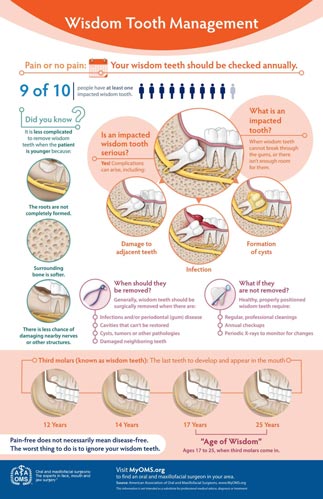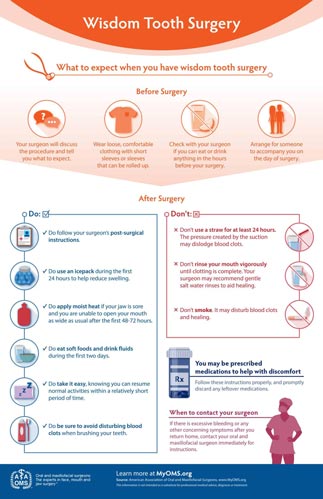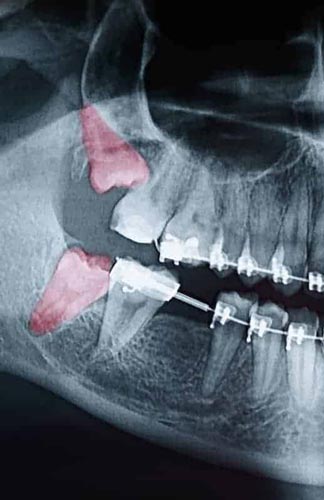Wisdom Teeth Extractions
Wisdom Teeth Removal
Most people have enough room in their mouths for 28 teeth. When four additional molars start to come in, usually in the late teens and early 20s, it can cause problems for some. This includes crowding, coming in sideways, soreness, risk of infection, and becoming stuck beneath the gum and bone. When wisdom teeth don’t erupt through the gumline properly, they can create severe problems, including:
- Risk of infection in tissues surrounding the tooth
- Disruption to the orthodontic or natural alignment of teeth
- Formation of tumors or cysts around impacted wisdom teeth, resulting in jawbone or tooth destruction.
We evaluate patients’ wisdom teeth before they start to come in, using X-rays to monitor their formation and progress. If the teeth show signs of causing complications, we suggest having them removed. Since early treatment is beneficial to patients, we recommend children be evaluated when they are in their mid-teens.

The Extraction Process
In most cases, it is easier for patients to remove wisdom teeth while under anesthesia, with a decreased level of consciousness throughout the procedure.
We start by helping patients relax and then deliver a general anesthetic. Throughout the procedure, patients are safely and appropriately monitored. After the teeth and roots are removed, we suture the tissue to close the wound and prevent infection. We place gauze on the incisions to control bleeding.
After the surgery, patients rest under our supervision until they are ready to go home. Our team provides a post-op kit that includes care instructions, prescriptions for pain medications and antibiotics, and a follow-up appointment for suture removal.



